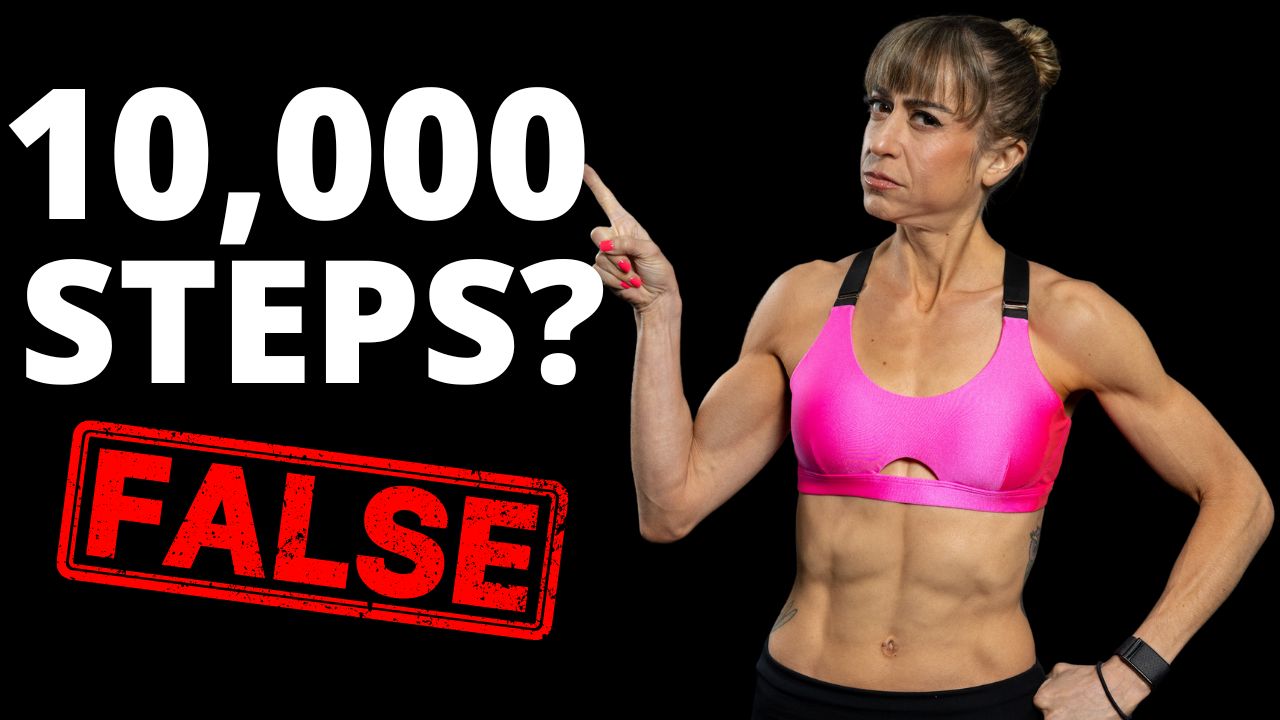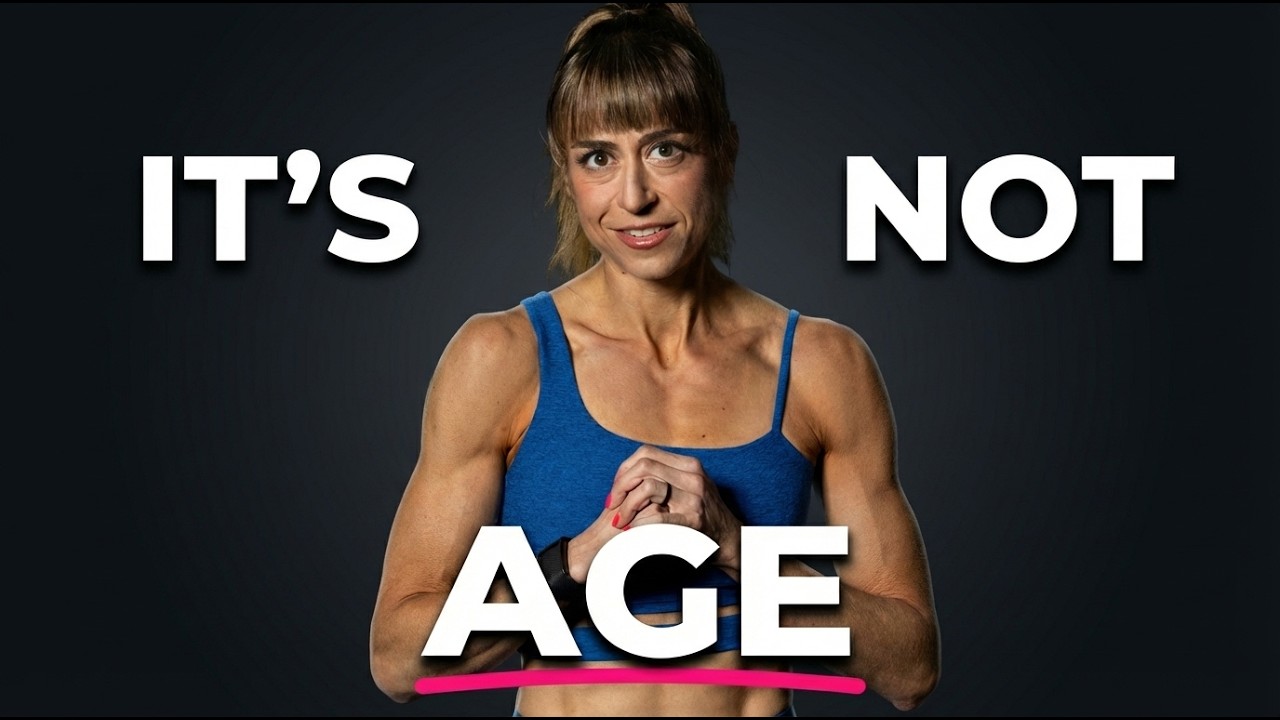A new study came out saying that you don’t need 10k steps. It says you only need 3,800. But what does this number mean and is it too good to be true?
I want to share why you may still want to build toward a 10,000 step goal and the difference between “minimums” and “optimal” when talking about recommended amounts.
I also want to discuss the different benefits at specific thresholds as you increase your steps.
Because the short answer is, no you don’t need 10,000…to survive. But 10k+ steps may still be best for your performance and fat loss goals especially.
There is always nuance to things.
Like the 3,800 steps a day goal. That is to reduce your risk of death.
But is your goal just “not dying?”
It’s like the protein RDA…

The RDA for protein is around 0.8g/kg bodyweight.
That’s just enough to prevent deficiency.
But that’s not enough to build serious muscle, especially as we get older, or optimize health.
The same thing goes for this new step goal.
That being said, that doesn’t mean 10,000 is a magic number where all your fitness goals will magically be achieved.
And you may now be thinking, “Where did the 10,000 step goal even come from? What study said that?”
Well actually there is no scientific basis for this amount.
Yup. This number we all just accepted as fact accidentally became a mainstream solid goal after the distance became popular in Japan in the 1960s.
There are two overlapping stories as to how this number came to be….
One is that 10,000 steps a day started as a successful marketing campaign in Japan to promote physical activity ahead of the 1964 Tokyo Olympics. It’s rumored the number was chosen because the Japanese character for 10,000 resembles a person walking.
The second is that the number became a more solid widespread goal in 1965 based on a Japanese pedometer company “Manpo-kei” which literally means 10,000 steps meter.
Either way, the number has no scientific basis.
However, shooting for this daily goal may have it’s benefits.
That’s why I want to discuss the different thresholds that research has found and what it means to hit each…
Let’s start with around that new recommended amount of 3,800. The 2k-4k steps a day range.
In this range research has shown a slight reduction in mortality risk and that it is “better than being sedentary.”
Note “better than being sedentary.” This is really a minimum to avoid negative health consequences.
And do you really just want to avoid bad health?
Now in the 4k-6k range we start to see a more moderate reduction in all-cause mortality.
This shows us that there are times that doing more than the “minimum” does yield better results and start to even help us thrive.
At about 7,000 steps is where we see the biggest benefit and reduction in mortality risk at about a 40-50% improvement.
But we also start to see no further specific health only benefits going over this amount.
So if we’re talking optimizing just mortality risk, this number seems to be it.
If this is the case, why go up to 10k?
Are you really just only walking to lower your risk of death?
Or do you have other fitness goals?
Are you looking to lose fat? Improve your metabolic health and increase your metabolism? Are you looking to improve your conditioning and recovery for performance goals?
For all of these reasons, 10,000 steps a day may be still be your goal.
Above 7,000 the benefits are fat loss and performance based.
Walking more will improve your endurance and cardiovascular fitness.
It will improve your insulin sensitivity to help you lose fat, which can be especially helpful during menopause for fat loss and overall health.
And, it is often that secret weapon for fat loss we don’t implement.
More steps means more calories burned daily which helps with fat loss while not beating us down like intensive training sessions or requiring us to eat less.
Also, unlike intensive training sessions, walking is less likely to increase your appetite and hunger levels while increasing your calorie expenditure.
It can even help better regulate appetite and aid in digestion.
And it can help with recovery and stress management both of which pay off for performance and fat loss goals – not to mention OUR HEALTH!
So more steps, may just be what you need to reach your goals and THRIVE.
Now if you’re looking at your step tracker thinking, “Well great. I’d love 10,000 steps but I’m barely getting 1,000 right now…”
Don’t fear!
Small changes add up!
Set a starting goal of even just 1,000 more steps. Plan in two 5 minute breaks to get up and walk around to hit it.
Challenge yourself to do that for 2-3 weeks and build from there.
As you feel good with those changes and even see other results happen, like inches being lost or changes on the scale, add more.
The more you allow yourself though to have a starting goal that’s doable, the more you’ll feel the win of success just from increasing your steps and want to do more!
Over time you can build further.
Even consider different step goals on different days! If weekends are less busy, why not shoot for more?
The key is meeting ourselves where we are at to make changes.
But also, let’s not just accept doing the minimum at time. Let’s not settle for just not dying.
Let’s seek not just to survive but thrive!
So while that new study shows us that we can improve our health even just through adding a few more minutes of movement, we don’t want to ignore the benefits that shooting for 7-10,000 steps can have for our health and our goals.
4,000 steps may keep you alive, but 10,000 could be what you need to see the recomp you’ve been dreaming of!
Optimize your workouts and your diet to build your leanest, strongest body at any age…



0 Comments